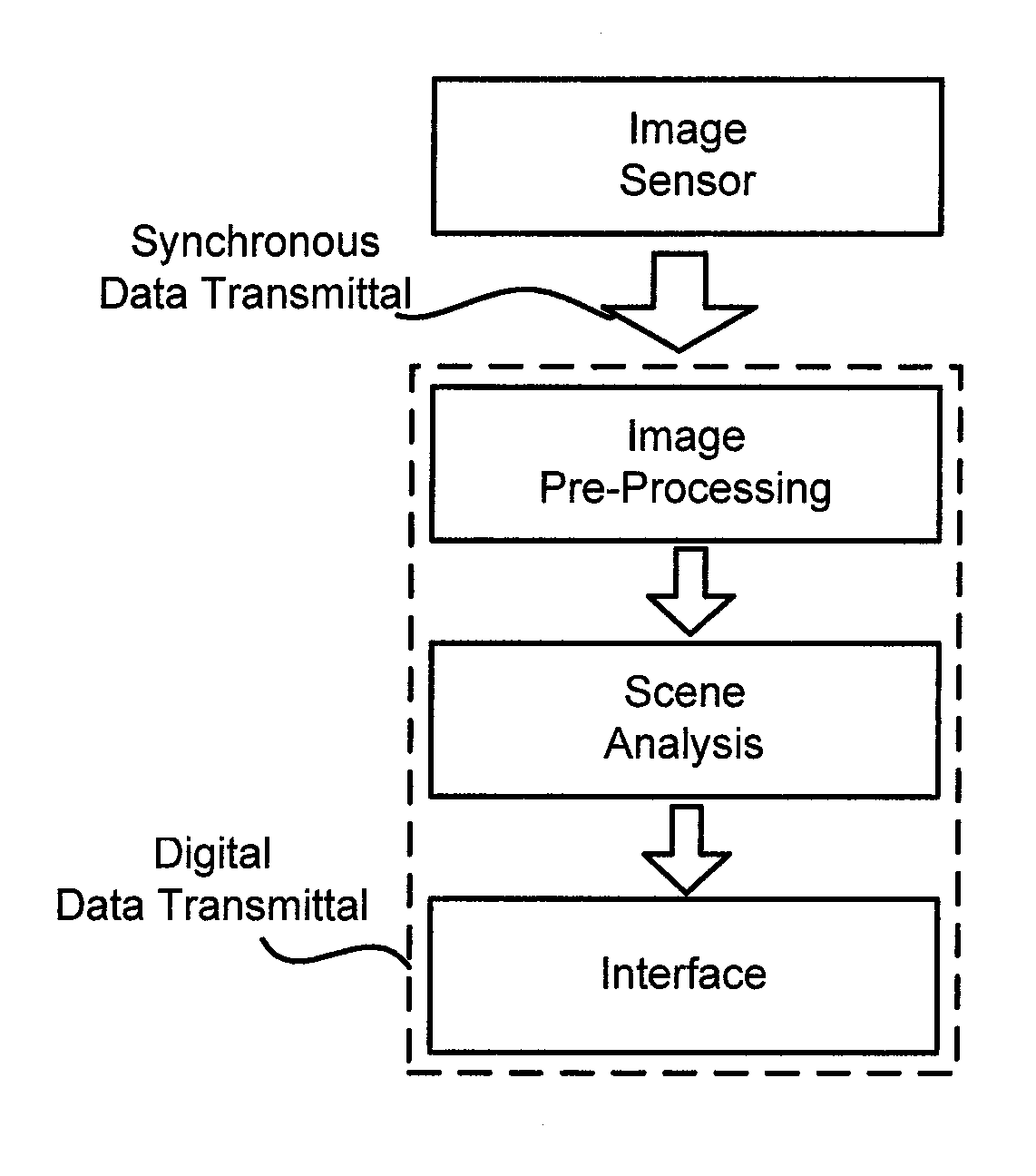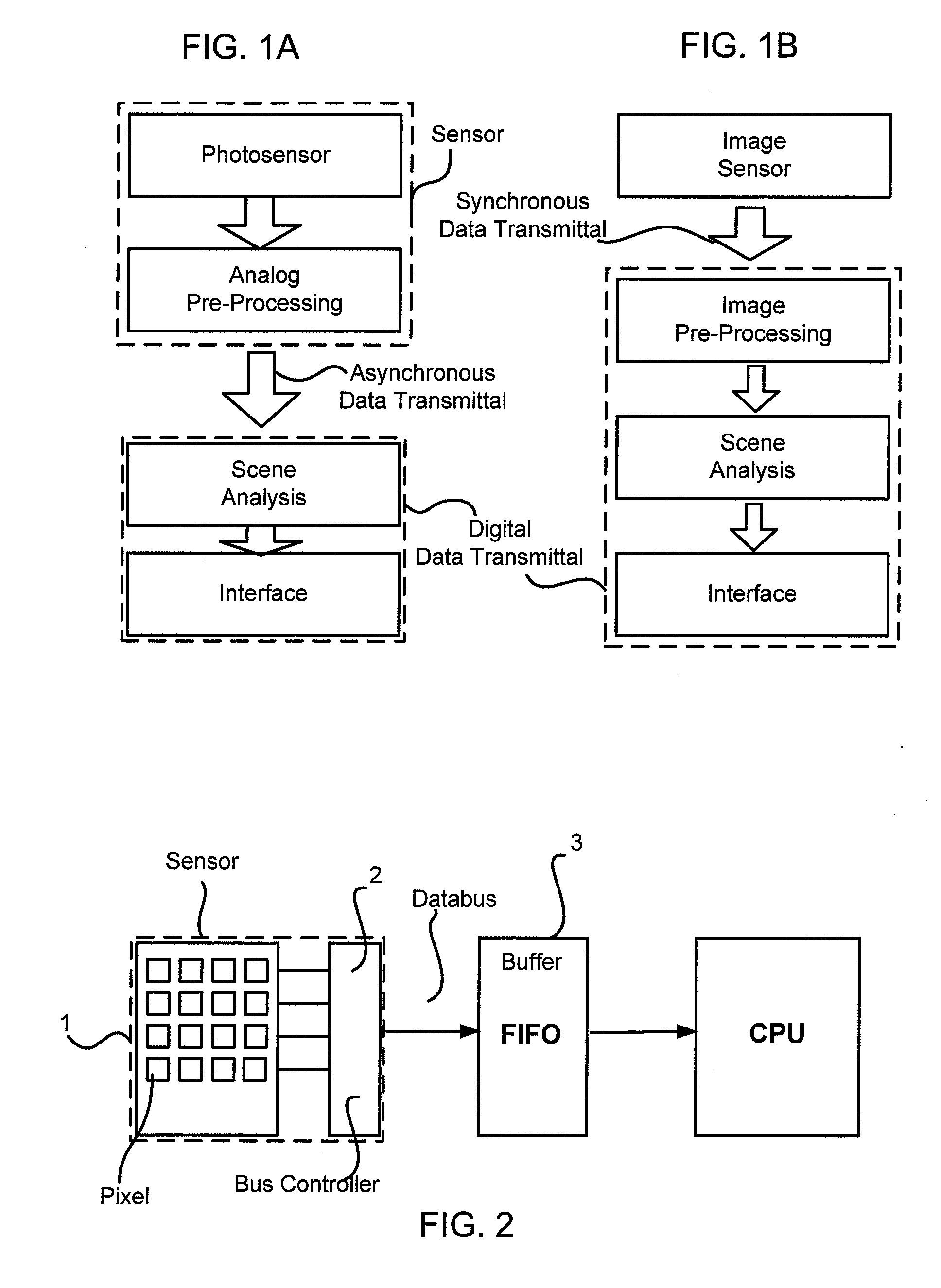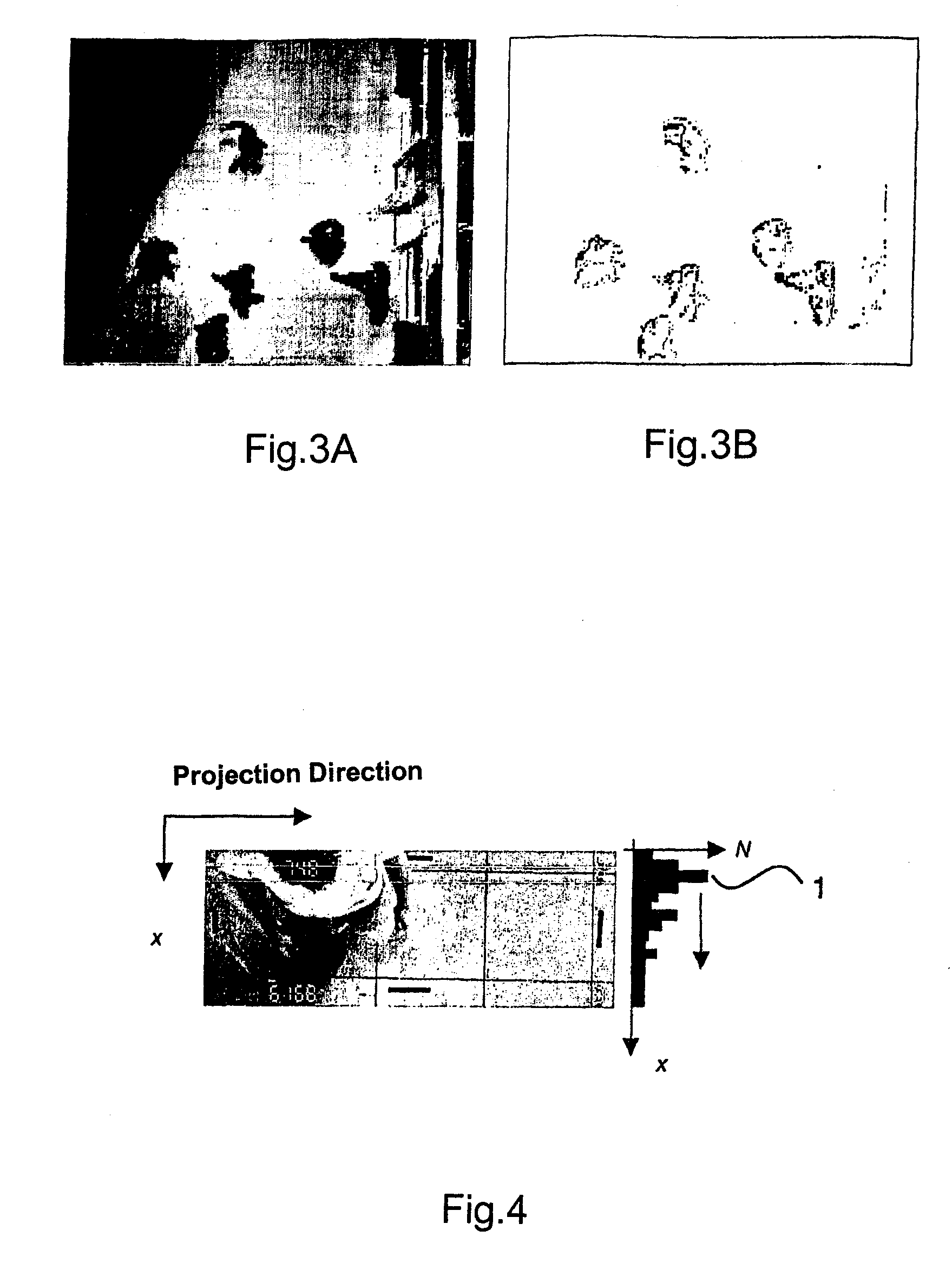Method and Image Evaluation Unit for Scene Analysis
a scene analysis and image evaluation technology, applied in image analysis, instruments, computing, etc., can solve problems such as limited principles, and achieve the effect of quick processing of signals and quick identification of significant information
- Summary
- Abstract
- Description
- Claims
- Application Information
AI Technical Summary
Benefits of technology
Problems solved by technology
Method used
Image
Examples
Embodiment Construction
[0028]Referring now to the figures of the drawing in detail and first, particularly, to FIGS. 1A and 1B thereof, there is shown a difference between the prior art and the method according to the invention. To date, the information or data delivered by an image sensor were synchronously forwarded and, after a digital image pre-processing and scene analysis, the results were transmitted via an interface of the apparatus (FIG. 1B).
[0029]According to the invention, the image signals of the optical sensor are processed in a specific manner, namely in such a way that the intensity information recorded by a photo-sensor in the image elements of the optical sensor is pre-processed by an analog, electronic circuit. Quite generally, it is noted that the processing of the signals of several adjacent photo-sensors can be combined in an image element. The output signals of the image elements are asynchronously transmitted via an interface of the sensor to a digital data evaluation unit in which ...
PUM
 Login to View More
Login to View More Abstract
Description
Claims
Application Information
 Login to View More
Login to View More - R&D
- Intellectual Property
- Life Sciences
- Materials
- Tech Scout
- Unparalleled Data Quality
- Higher Quality Content
- 60% Fewer Hallucinations
Browse by: Latest US Patents, China's latest patents, Technical Efficacy Thesaurus, Application Domain, Technology Topic, Popular Technical Reports.
© 2025 PatSnap. All rights reserved.Legal|Privacy policy|Modern Slavery Act Transparency Statement|Sitemap|About US| Contact US: help@patsnap.com



